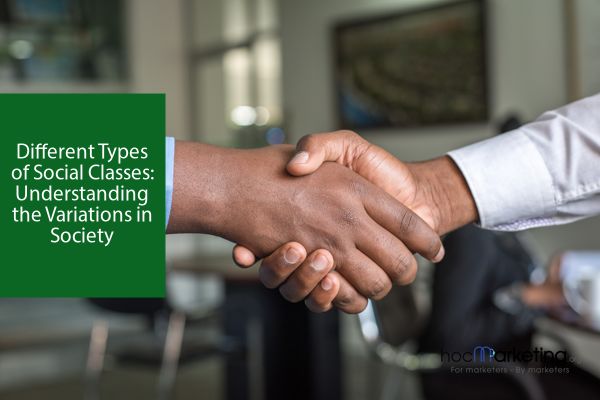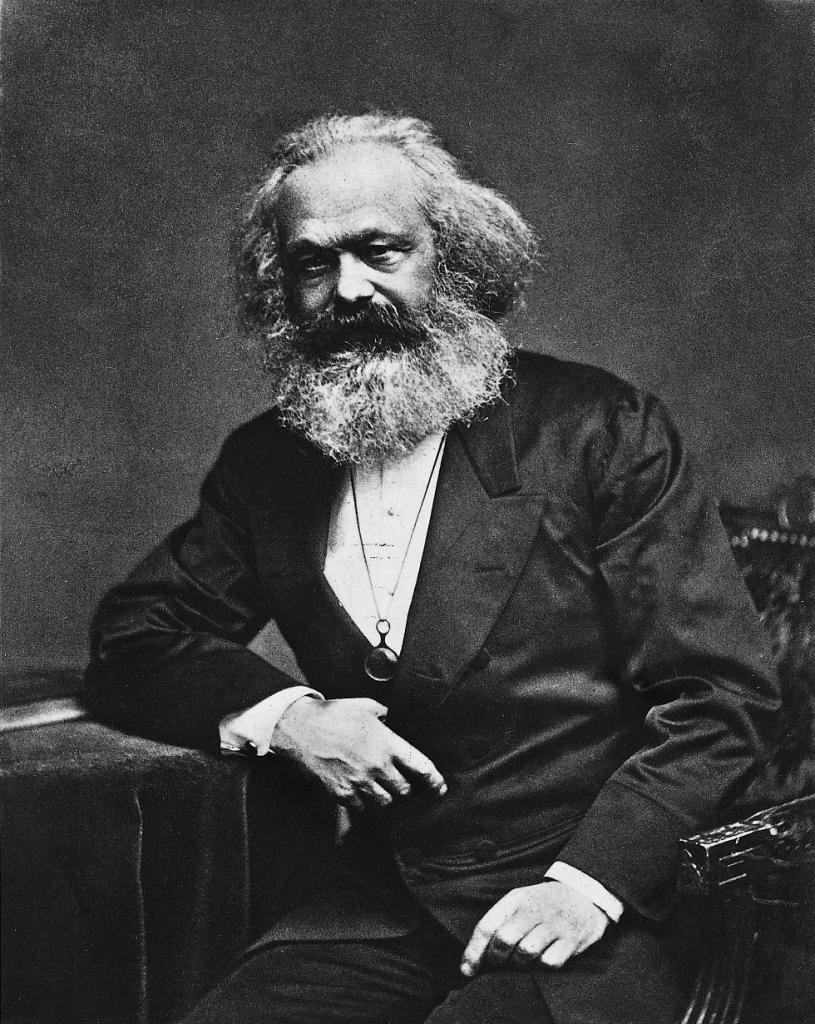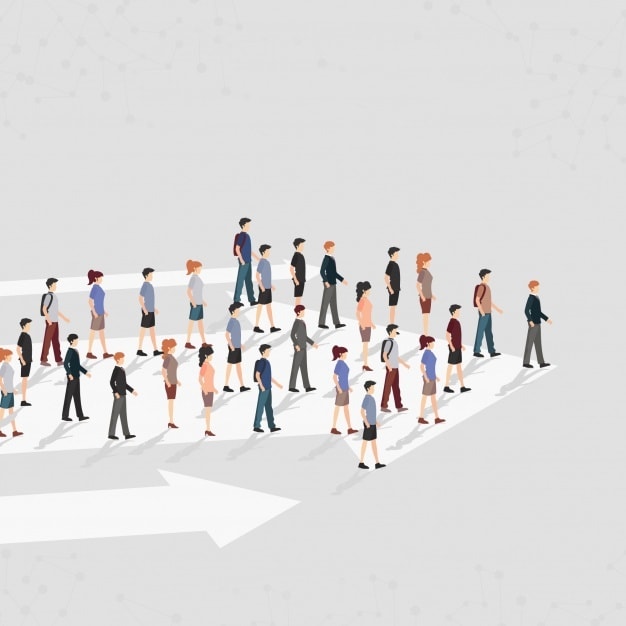
Different Types of Social Classes: Understanding the Variations in Society

Social class refers to a group of individuals in society who share similar economic and social status It is a relevant social theory that encompasses Karl Marx's theory of class, Weberian perspective, different types of social classes, and the consequences of one's class position
In society, social class refers to a group of individuals who share similar socio-economic status. This concept, which is both relevant in social theory and the study of social mobility, is based on individuals who possess similar economic conditions.
Social class became a widely used term in the 19th century to replace the terms of water and rank. Feudal distinctions were losing their importance, and new social groups were emerging, such as industrial capitalists and working class. It is important to distinguish social classes based on status groups, which can be determined by economic interests or by evaluating prestige, cultural position, or family descent.
Karl Marx’s social theory of class
Different societies can be distinguished by their mode of production, according to Karl Marx. Each production model is associated with a particular class, where one class controls and directs the production process, while the other class is responsible for providing services and carrying out production. However, the classes are in conflict with each other, leading to antagonistic relations over what is produced.
During periods of technological advancement, conflicts can arise as a new class challenges the dominance of the existing upper-class. This class not only controls material production, but also idea production, establishing a particular cultural style and political doctrine that dominates society with a specific type of political system. As rising classes gain influence and strength through changes in production modes, they generate political doctrines and movements in opposition to the ruling class.
Weberian
Karl Marx's social theory places great emphasis on the class theory, as it is the formation of social classes within a specific mode of production that holds central importance. These social classes have the power to shape the state, instigate political conflicts, and bring about significant changes to the structure of society.
Max Weber formulated the three-component theory of stratification, which posits that social classes emerge from a combination of status, class, and power. According to Weber, a person's position within a class is determined by their relationship to the means of production, while status is based on perceptions of prestige and honor. Weber viewed classes as groups with common goals and opportunities, with each class distinguished from others by its value in the marketplace. His ideas on social stratification have been influential in analyzing social structures across various countries.
He observed that Karl Marx's theory proposing stratification based solely on capital ownership was not entirely accurate. Additionally, he highlighted the fact that some members of the aristocracy wielded significant political power despite lacking economic wealth. As an example, he cited the case of Jewish families in Europe who were denied prestige and honor due to their classification as a Pariah group.
In the context of society, class refers to an individual's position. However, Weber's perspective on stratification differs from that of Marx, who did not view it as the primary factor. Weber also observed that many corporate or industrial managers have control over organizations that they do not own.
Status, on the other hand, relates to an individual's prestige, popularity, or social standing within society. Weber believed that political power was not solely based on capital value but also on an individual's status. For instance, writers and poets may have significant influence on society despite having little economic value.
Power is the ability of an individual to achieve their desired outcomes despite facing opposition from others. Individuals employed at state institutions such as the Federal Bureau of Investigation or Central Bureau of Investigation, as well as members of the United States Congress, wield significant power regardless of their material possessions or social status.
Types of social classes
Typically, specialists utilize three different methods to determine social class:
The objective method: which measures as well as analyses hard facts
This objective method: which enquires people what do they think about themselves
The reputational method: which asks people what they think about others.
Further, social classes are also divided on the basis of classes. This classification is as follows:
Fragment 13: Lack of access to proper medical care
People belonging to the lower class face the challenge of limited access to adequate medical care. Due to financial constraints, they are often unable to afford proper treatment for illnesses and injuries. This can lead to a vicious cycle of poor health and further financial strain, making it difficult for them to break out of poverty.
The media's portrayal of the working class is often riddled with stereotypes and misconceptions. They are often depicted as uneducated and lacking ambition, perpetuating the idea that they are stuck in their current socio-economic status and unable to improve their lives. However, in reality, the working class is comprised of hardworking individuals who hold jobs and contribute to society. They may not have access to the same opportunities and resources as the upper class, but they are not lazy or undeserving of basic human dignity and respect.
The working class is comprised of individuals with minimal education who perform a variety of jobs, some of which may carry prestige. Among the unskilled workers in this class are cashiers, dishwashers, waitresses, and maids, who are often underpaid with limited opportunities for career advancement, earning them the label of the "poor working class."
Skilled workers in this category, such as plumbers, carpenters, and electricians, are known as blue-collar workers. While they may earn more money than middle-class workers like secretaries, teachers, and technicians, their jobs are often physically demanding and can be hazardous in certain instances.
The middle class, often referred to as the sandwich class, consists of white-collar workers who possess more income than those lower on the social ladder, but less than those above them. This class can be further divided into two categories based on their level of education, prestige, and wealth. The lower middle class is comprised of individuals with lower levels of education and income, including small business owners, managers, teachers, and secretaries. The upper-middle class is comprised of highly educated professionals with higher incomes, such as stockbrokers, lawyers, CEOs, doctors, and other similar professions.
The upper class, comprising a mere 1-3% of the US population, commands a staggering 22% of the nation's wealth and is bifurcated into two segments - the lower-upper and upper-upper classes. The former is characterized by individuals with newfound wealth, accrued through investments, business ventures and the like.
The upper-upper class is composed of the highest echelons of society, consisting of aristocrats and individuals with inherited wealth spanning many generations. These individuals are incredibly affluent and their lifestyles are sustained solely by their inherited riches. In comparison to the lower upper class, the upper-upper class is far more prestigious. Regardless of the origin of their fortune, both segments of the upper class are immensely wealthy. With an abundance of resources, they have the luxury of indulging in a variety of interests and activities, often residing in exclusive neighborhoods and frequenting expensive social clubs. Their sphere of influence extends beyond their local community, exerting dominance and impact on a global scale.
Consequences of class position
One's social and economic status can greatly influence various aspects of their life, from their access to healthcare and education to the job opportunities available to them. This can even extend to whom they choose to marry and how they are treated by law enforcement and the justice system.
The middle-class demographic is experiencing a concerning rise in substance abuse-related deaths and suicides, alongside a surge in chronic pain and overall poor health. The root cause of these issues appears to be linked to the stress and financial strain of transitioning from middle to lower class. It is worth noting that this group also actively participates in various sports and social activities.
may also play a role in determining the likelihood of participation in sports, but social class remains a significant factor. Additionally, the impact of social class on a person's overall development cannot be ignored, as it can greatly influence their opportunities and outcomes in life.
One's social class can greatly affect their physical well-being. Those in lower economic classes often have limited access to necessary medical care and nutrition, resulting in a significantly reduced life expectancy. Additionally, individuals in these classes tend to experience a wider range of health issues directly related to their economic status.
Low-income individuals often struggle to access adequate healthcare, and when they do, the quality of care may not meet their needs despite their higher prevalence of health issues. This population is also at higher risk for infant mortality, cardiovascular disease, and other physical injuries. Additionally, many low-income workers are employed in hazardous conditions, with limited access to health insurance due to their low income.
2. Education
The socioeconomic status of an individual greatly influences the educational opportunities available to them. Wealthier parents have the ability to enroll their children in prestigious, private schools that are often viewed as superior. Additionally, state-funded schools catering to the upper class are typically of higher quality than those designated for lower-class students.
Lack of good education and good schools is one of the major factors which perpetuates the social class and divides it across many generations.
3. Employment
Occupational opportunities and working conditions differ greatly across social classes. Those belonging to the upper and middle classes enjoy greater occupational autonomy, hold more respected positions, and are able to wield a certain level of influence in society. Additionally, they often have access to a wider range of job opportunities.
In contrast, those in the lower class are often forced to take on menial jobs with poor working conditions and little chance for upward mobility. These individuals may struggle to make ends meet and face significant barriers to social and economic advancement.
Blue-collar workers suffer more alienating work with physical hazards involved, which could lead to injury or even death.











